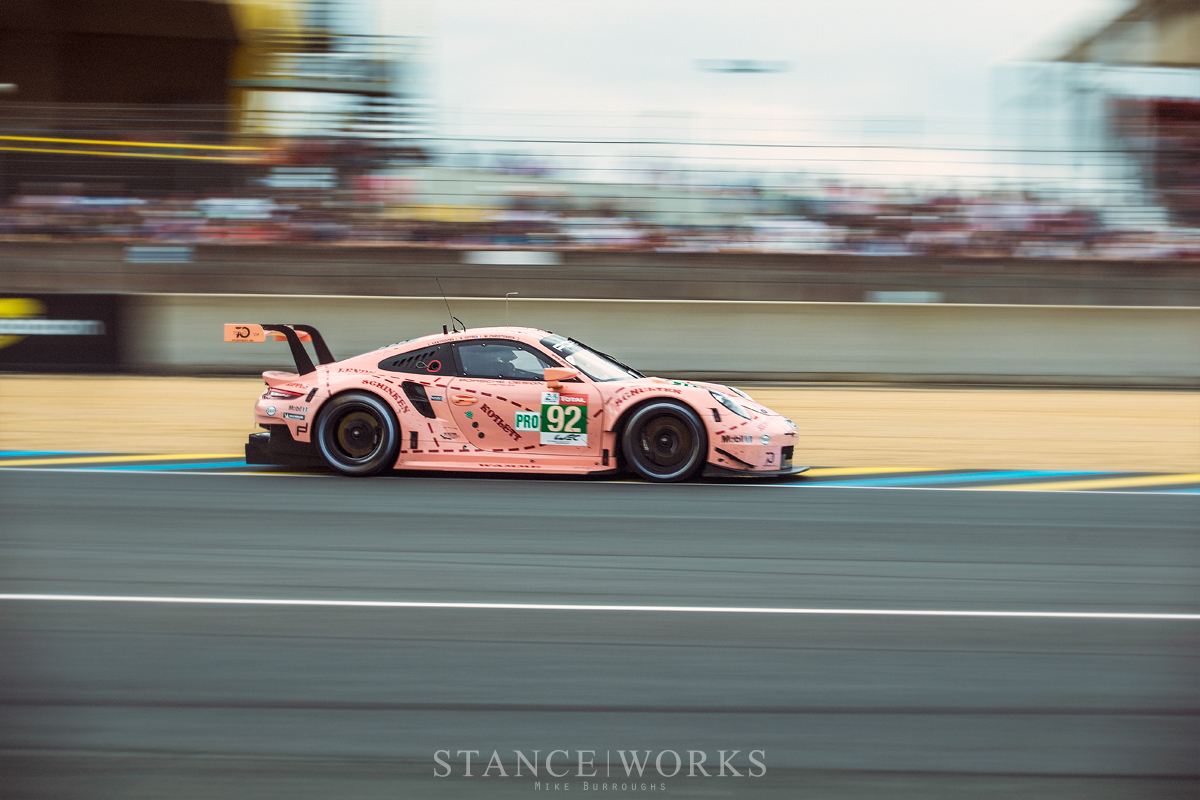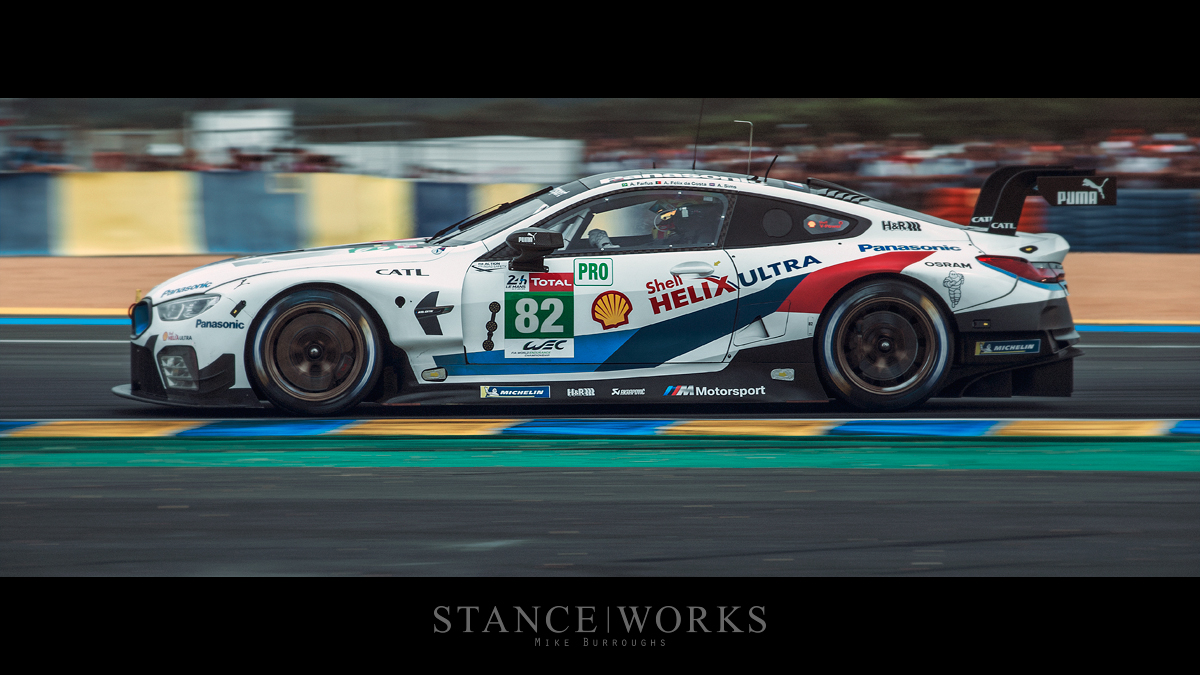
MISSION8: BMW Returns to the 24 Hours of Le Mans with the M8 GTE
By the time the green flag dropped at the 86th running of the 24 Hours of Le Mans, I had been awake for nearly 24 hours, but my adrenaline was pumping, eager and ready for the race ahead. A slew of LMP cars hurdled around turn one, turn two, and then three, swooping through the famous Dunlop chicane towards my photographer's perch. The Circuit De La Sarthe's stands were filled to the brim, and tens of thousands of spectators lined the track, eager to watch the world's most famous race unfold. Following the howls of the Le Mans Prototypes were the screams of the first GT cars: the Porsche 911s, the Ford GTs, the Ferraris, and the Corvettes too. And then, there they were: an incredible pair of M8 GTEs, racing in the midst of the most prestigious race in motorsports.
In the hours leading up to the race, excitement was in a constant climb. Race attendees piled into the Circuit de la Sarthe complex: the streets surrounding the world famous circuit filled with spectators, followed by the paddock, and then the pit and track itself as the pitwalk brought about the "home stretch" before the race. I waded through the crowds in the Motul starting grid, catching glimpses of the cars that would soon be battling it out for champion's rights, while track officials, crew members, and bystanders alike made for chaos in front of the lens. I've been to my fair share of IMSA races stateside, but even before it had begun, the 24 Hours of Le Mans was something else entirely.
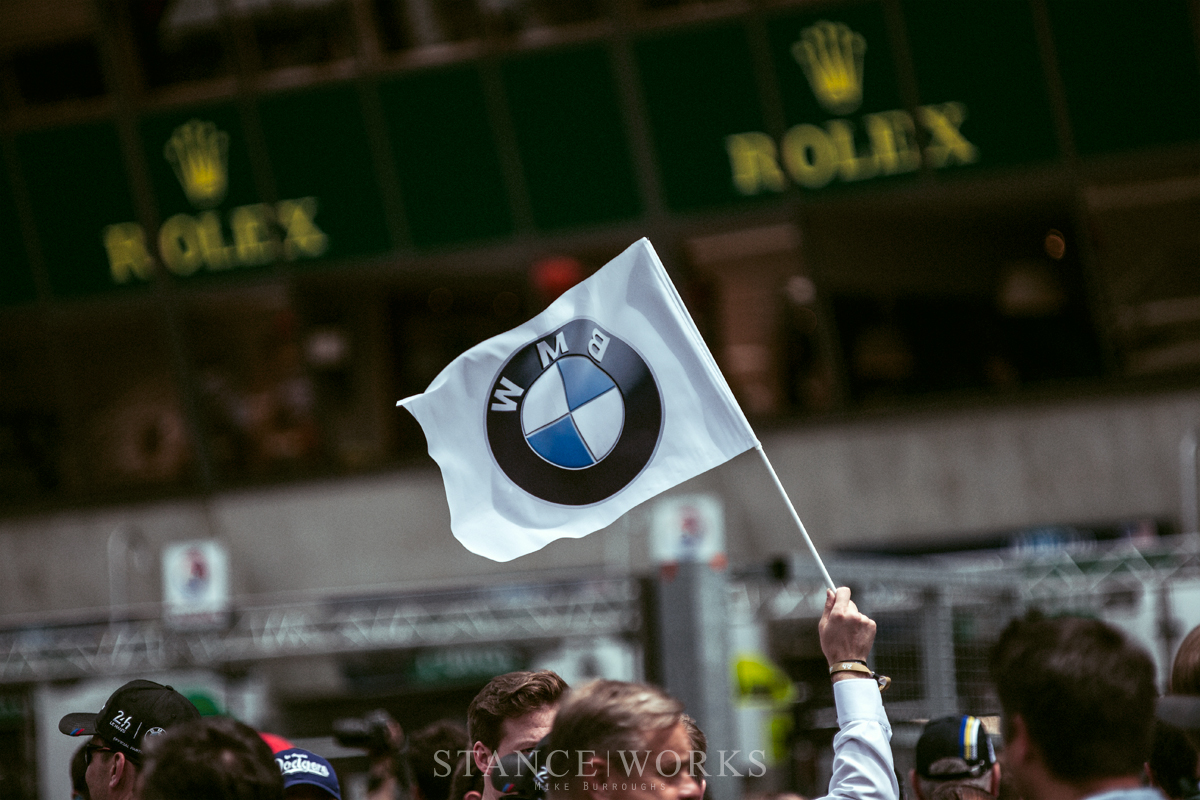
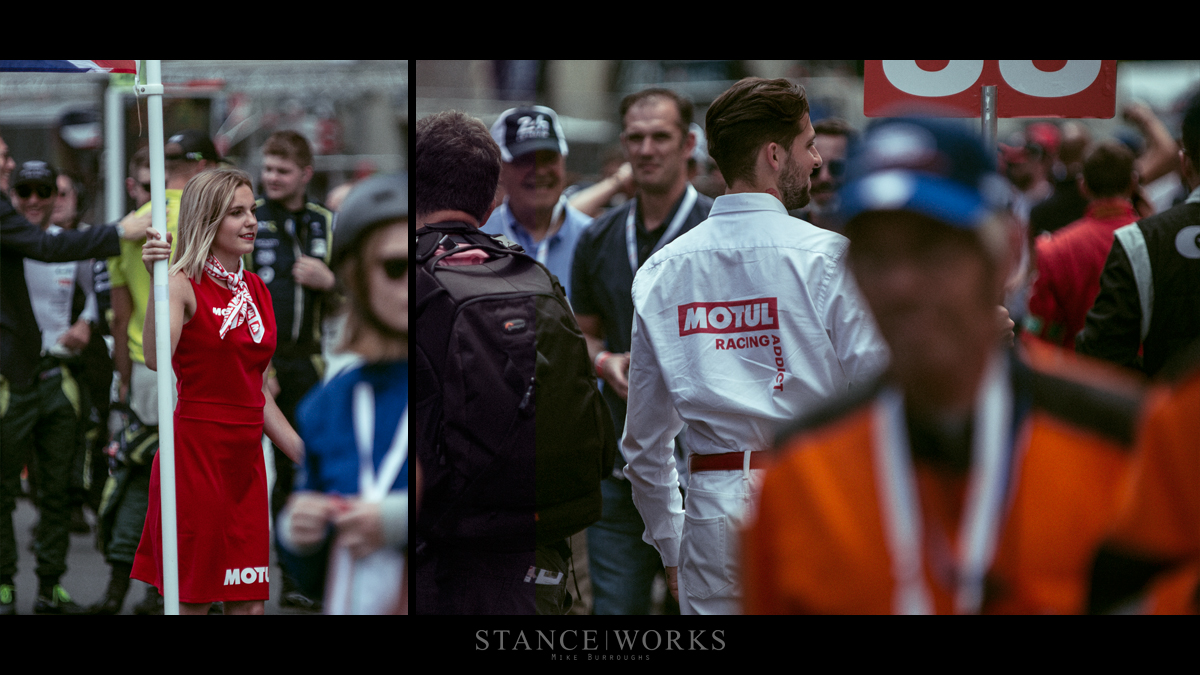
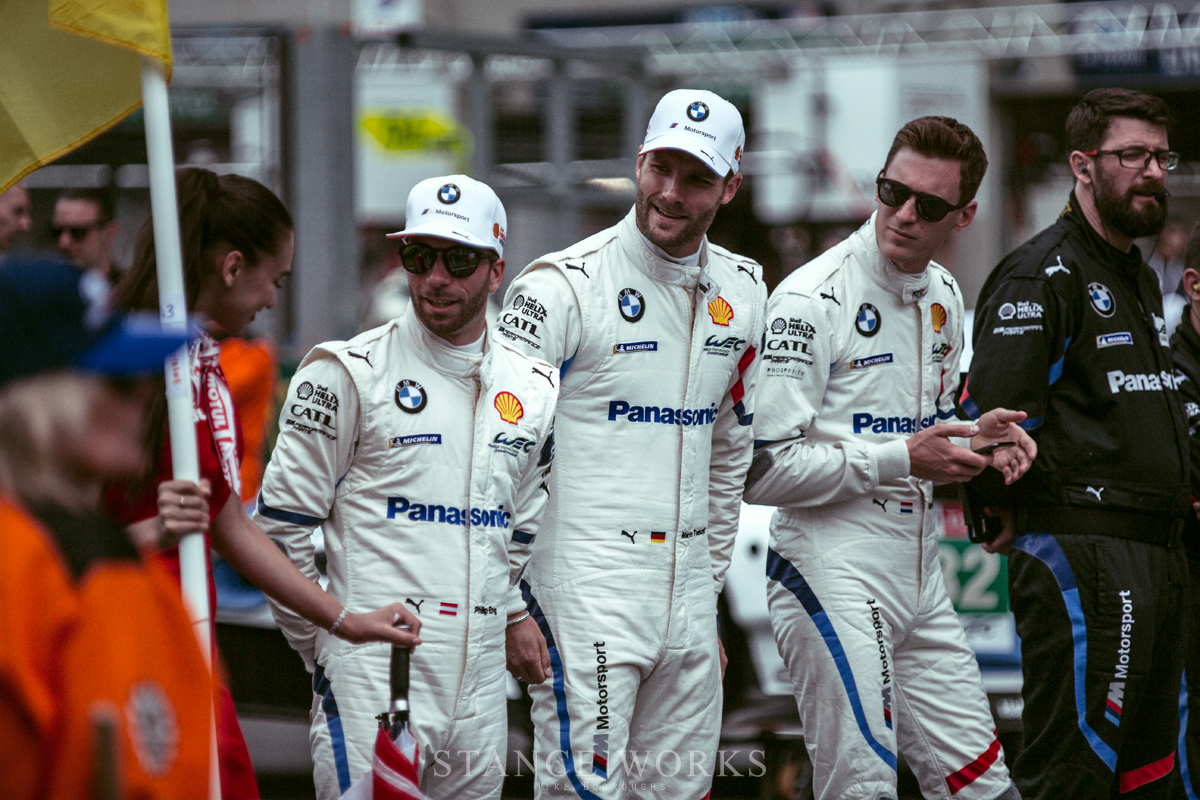
There was something immediately and obviously special about Le Mans. The crowds, the energy, and the cars all combined to create an atmosphere that's unparalleled by anything else in endurance racing. It was clear that the Europeans really care about their racing. With the race beginning soon, and not wanting to be caught in the calamity of clearing the track, I worked my way towards a trackside gate, and then along the tarmac's edge, hunting for the perfect spot to photograph the race's start. I walked past dozens if not a hundred photographers, poised near the starting line, all hoping for the the staple green-flag shot. I carried forth, worried less about the obvious pictorial captures and more about finding a place to settle in and enjoy endurance racing's finest machines as the long race set in. Jets flew overhead, France's National Anthem played, and 60-some-odd engines roared to life. The pace car made its lap, trailed by a troop of dodging, weaving cars, and in an instant, the 86th 24 Hours of Le Mans began.
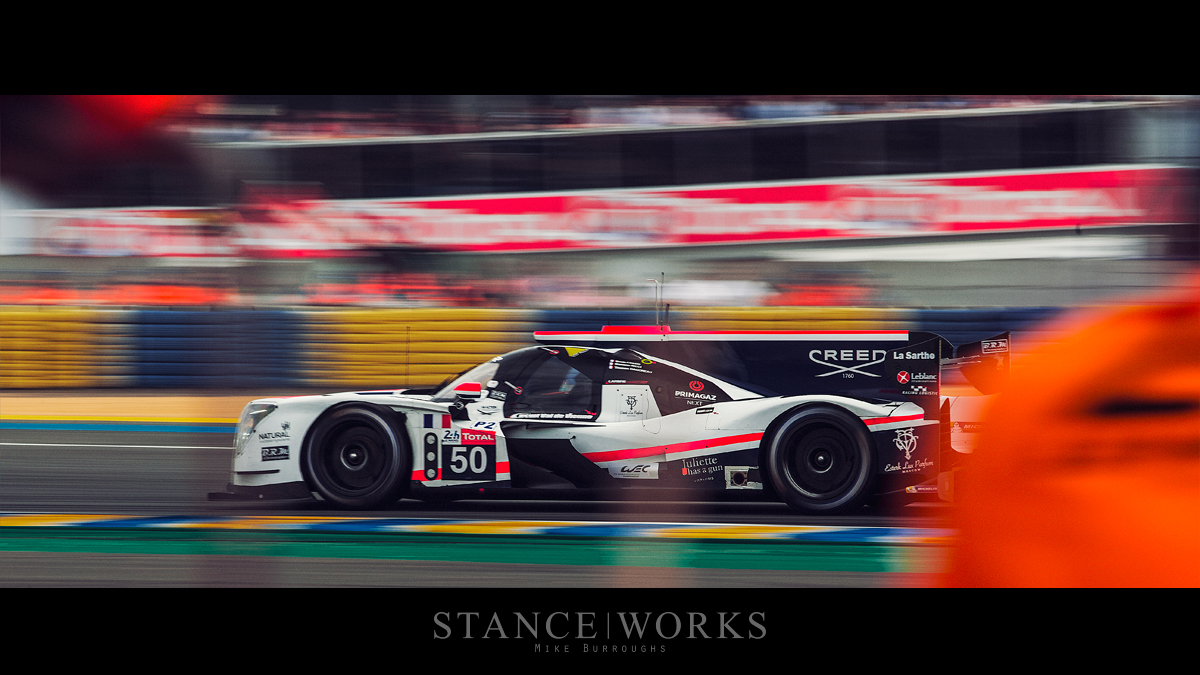
No matter the race, there's always a sense of urgency as a photographer. The brevity of the Long Beach Grand Prix, tallying in at just an hour and forty minutes long, feels no shorter than the 12-hour stint at Sebring, the 24-hour marathon of Daytona, or in this case, the legendary race of Le Mans itself. There's a constant pressure to get the shot, and racing offers no reprieve. Sure, 24 hours offers an entire day to photograph the race, but with dusk, nightfall, dawn, and the day all offering their own photographic opportunities, there's hardly a chance to breathe. Nevertheless, you can only attend your first Le Mans once, and I was excited for the long haul ahead.
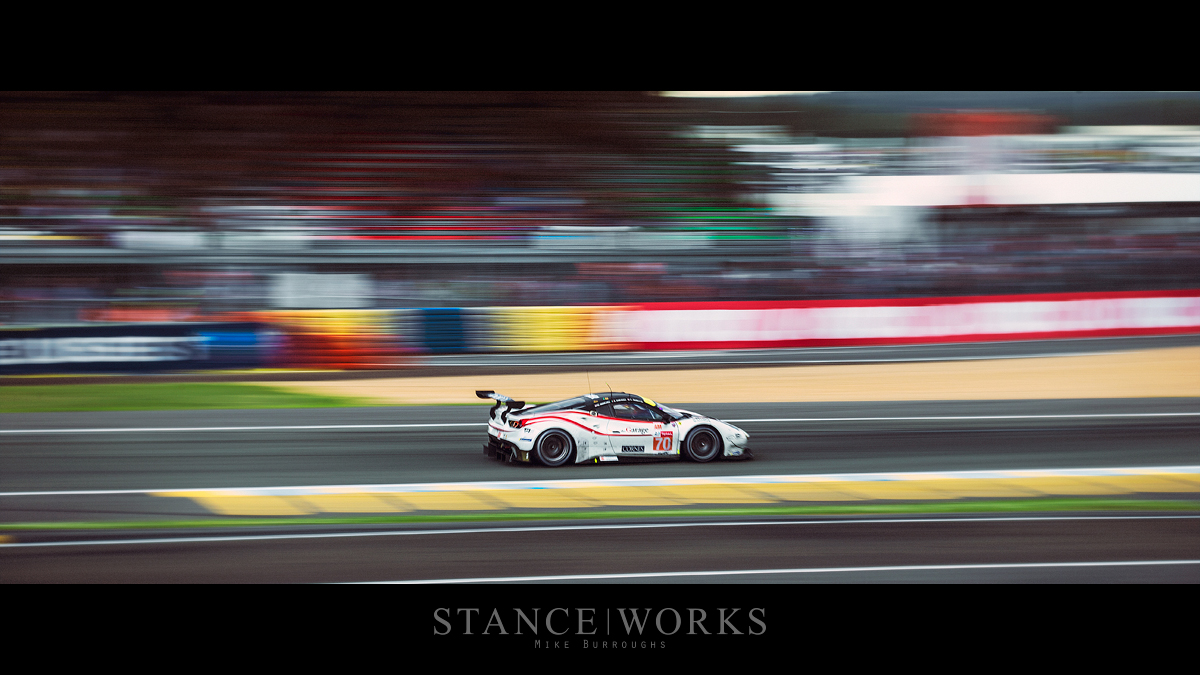
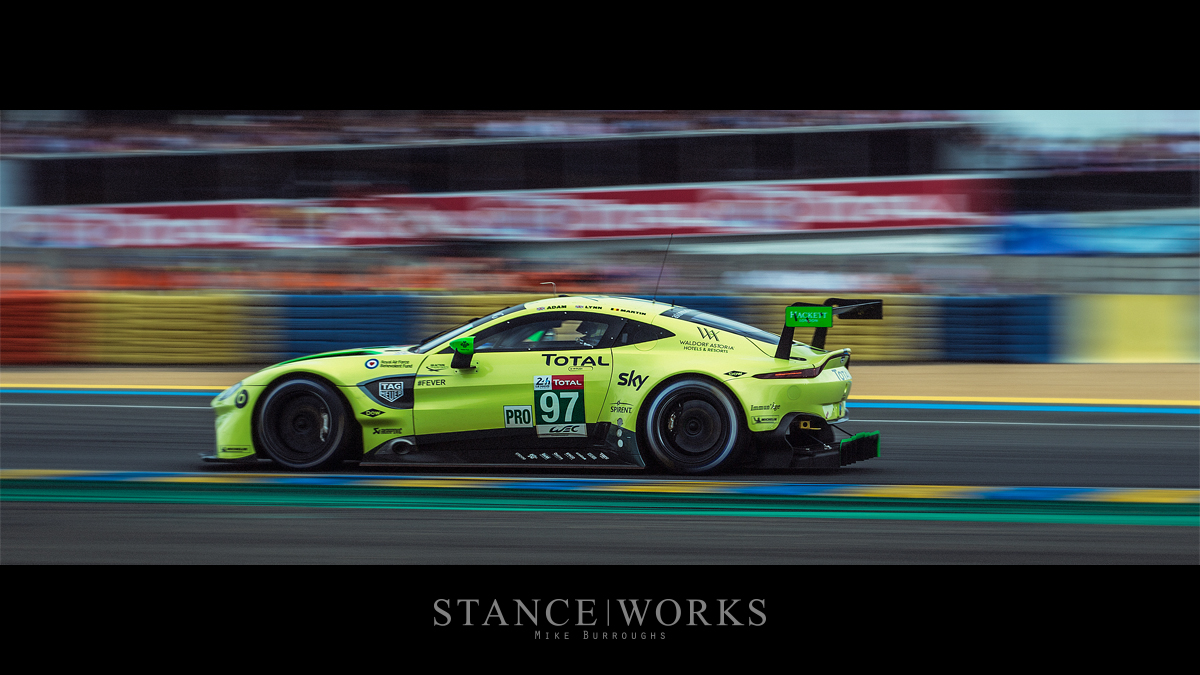
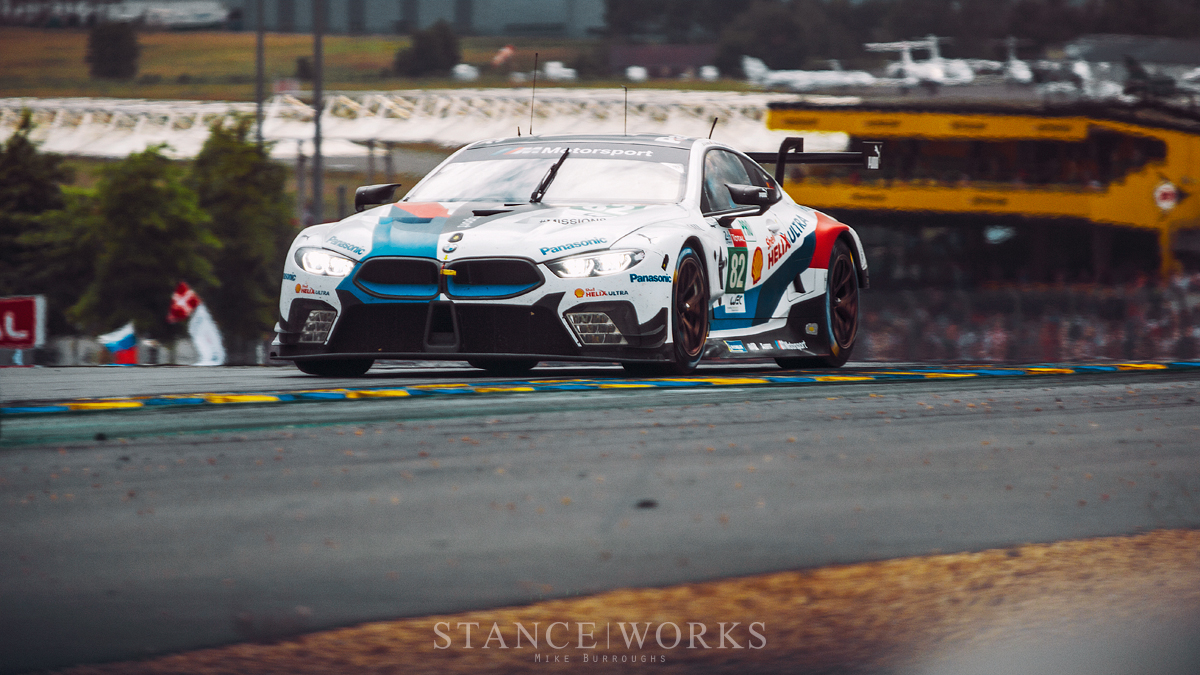
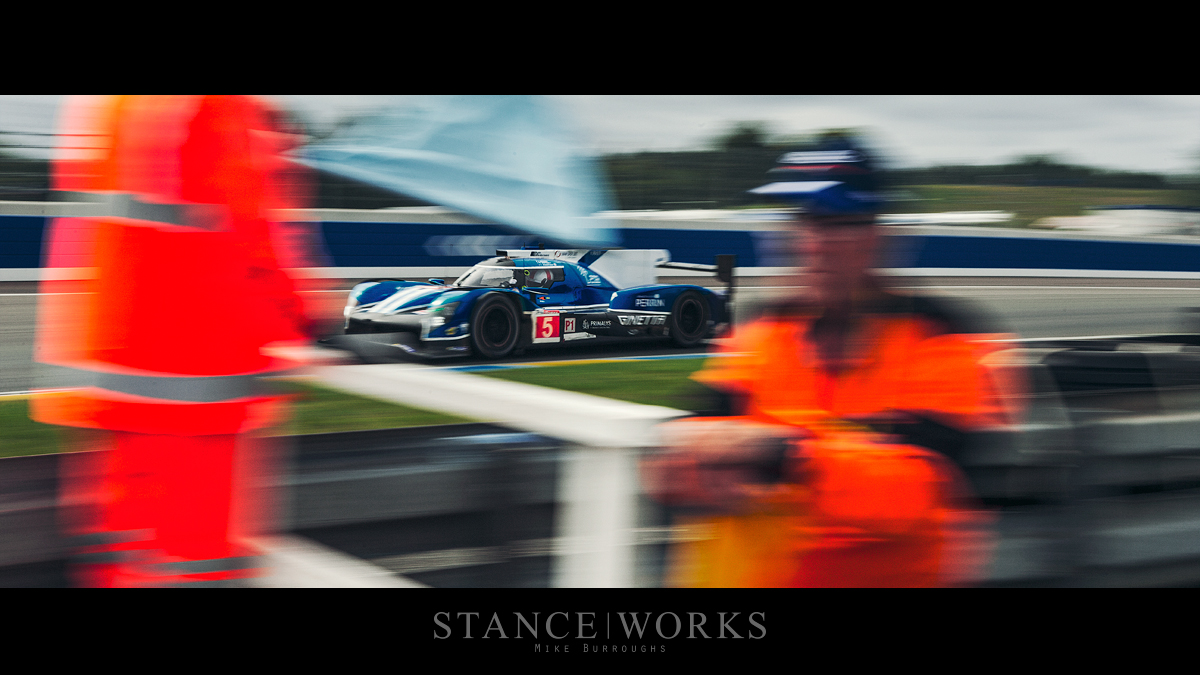
This year marked BMW's return to Le Mans for the first time since 2011. Returning as BMW Team MTEK, the marque fielded two M8 GTEs, #81 and #82, with a team of three drivers each. The M8 has had a chance to stretch its legs a bit, having done well at the FIA World Endurance Championship opening round at Spa in Belgium, as well as having raced in last year's IMSA WeatherTech Sports Car Championship, but running for 24 hours at the Circuit de la Sarthe brings about a new host of challenges.
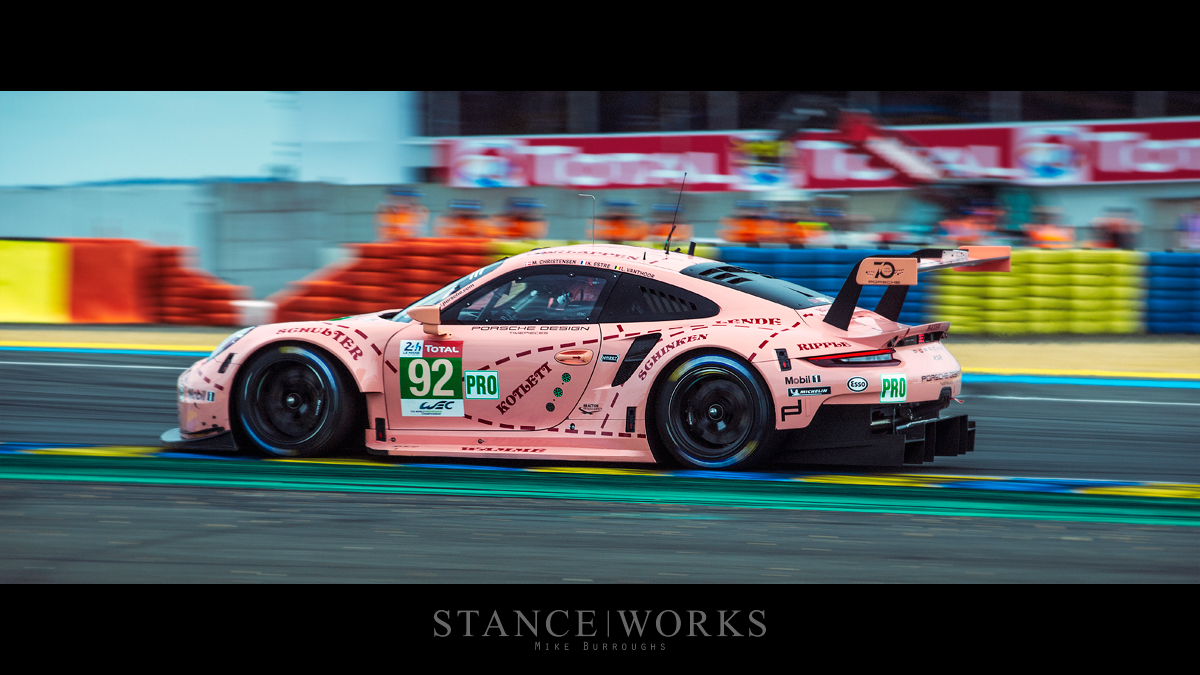
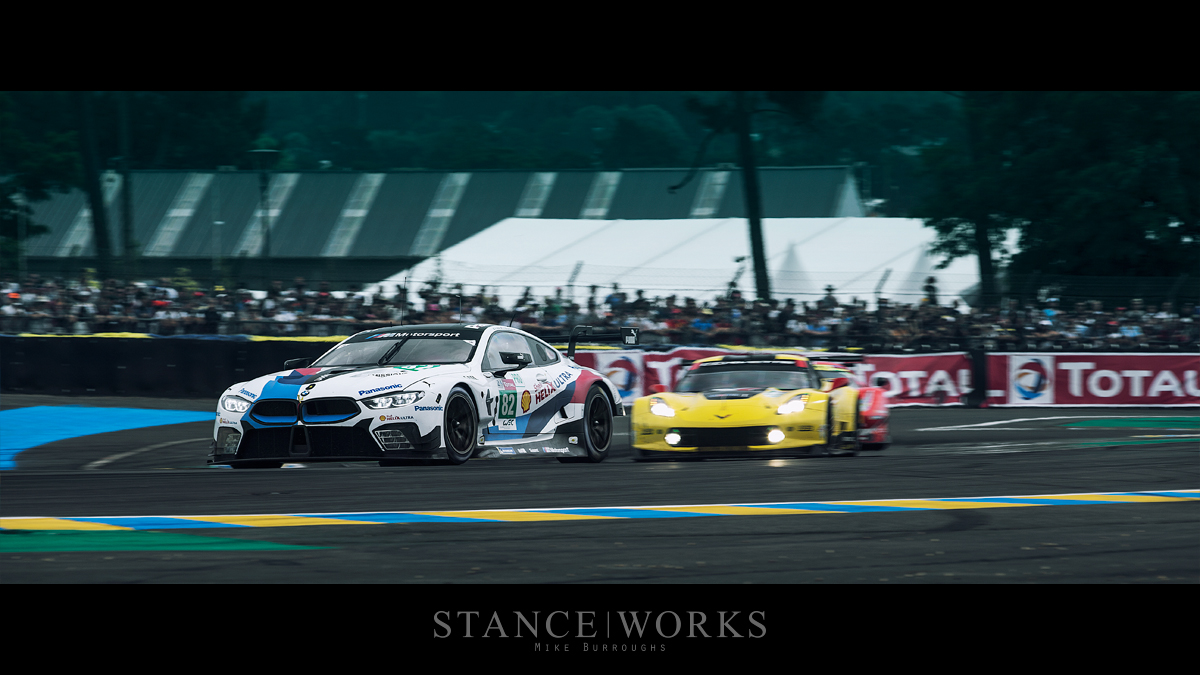
Despite the new hurdles, the BMWs did excellently in the opening hours of the race. Having qualified in 12th and 13th position, the BMWs had an uphill battle in order to gain position on the field, but before long, #81 had climbed to second place, having chased down the entire field of cars ahead of it, leaving only one 911 RSR in its path. #82 faired well too, climbing its way into the top 10, where it sat comfortably for some time.
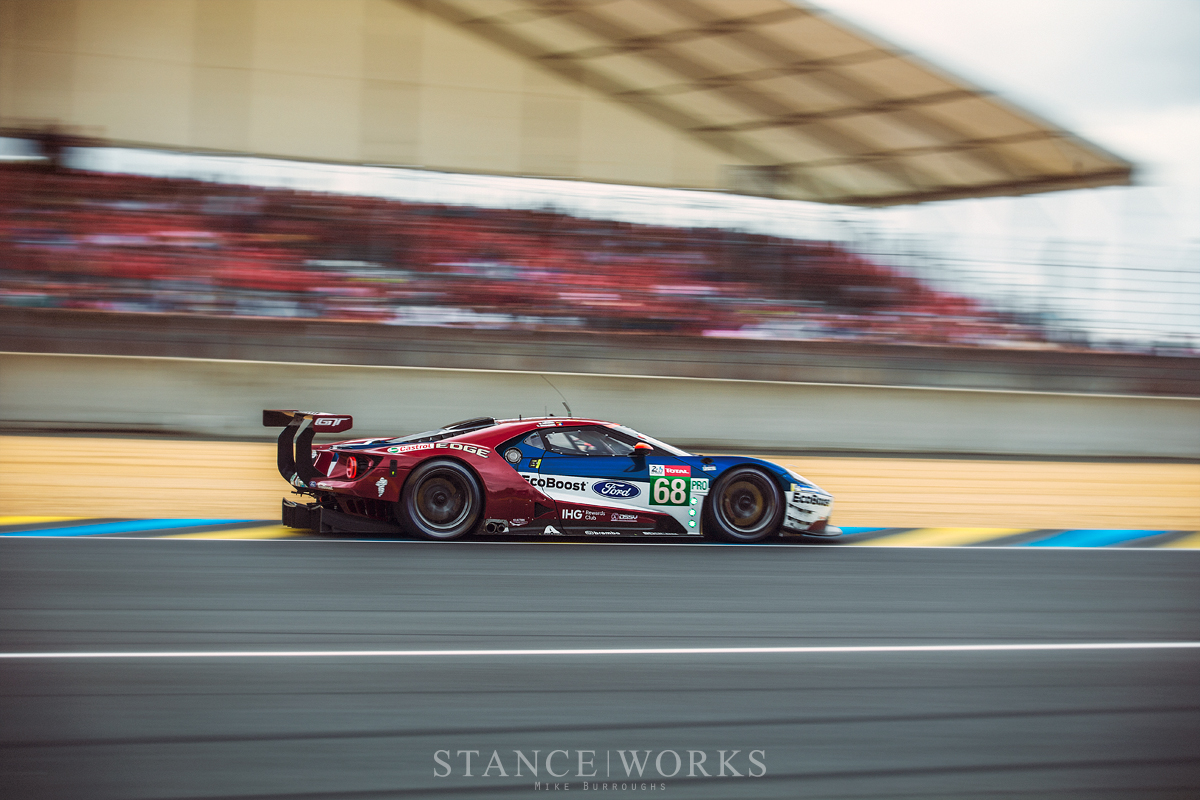
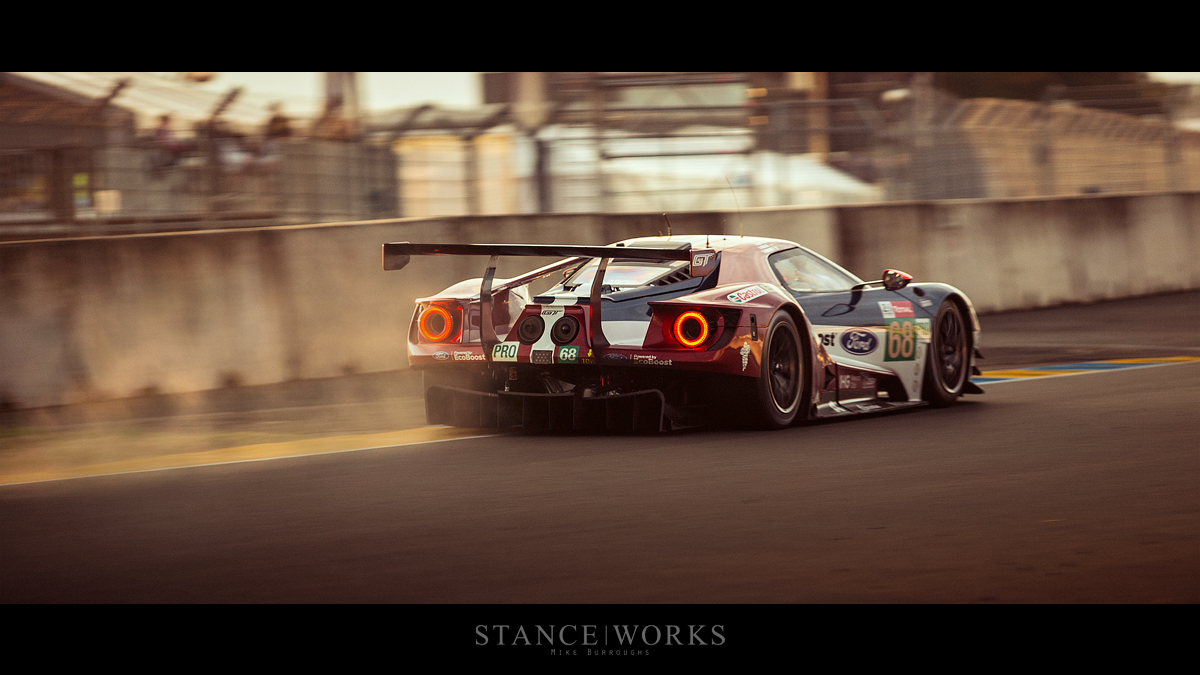
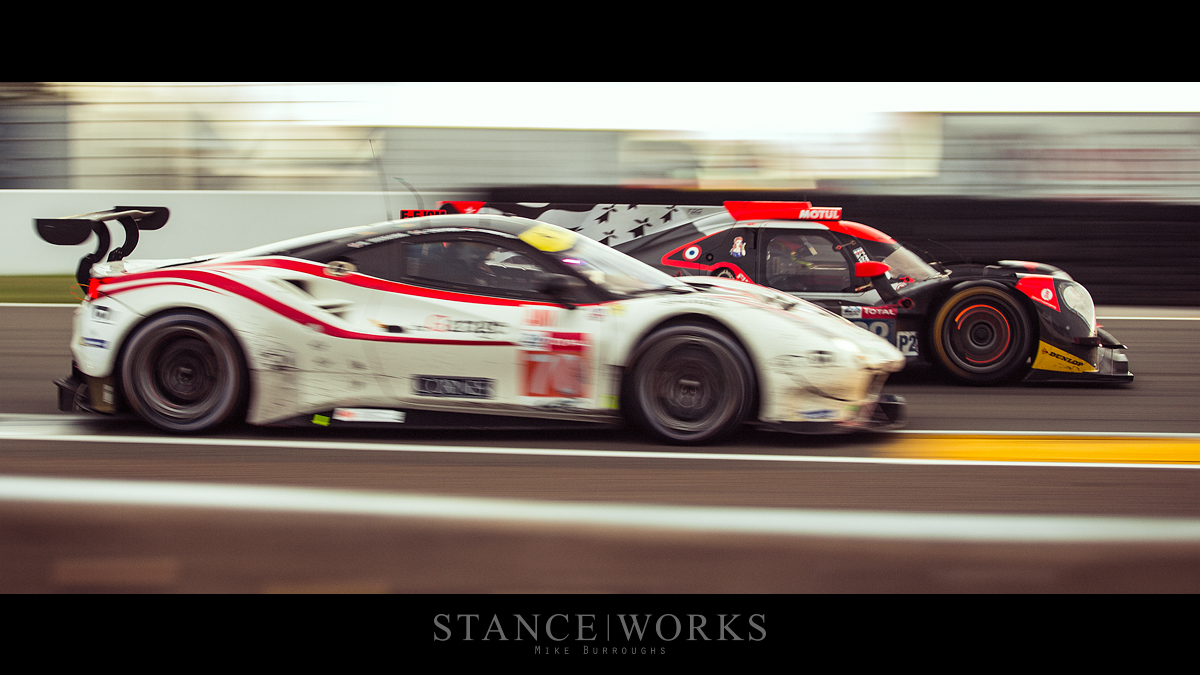
As the M8 GTEs blitzed their way around the track and through its high speed traffic, I worked my way around the circuit's perimeter, hunting for the ultimate vantage points. At almost 8.5 miles long, the Circuit de la Sarthe is one of the longest race tracks in the world, eclipsed only by the Nurburgring's Nordschleife at a staggering 14.1 miles in length. Most of le Sarthe is situated upon an actual race track, but the extended layout does include public roads that are closed for the event. Some of the far corners of the track prove to be a long hike away, so I focused my efforts on where the action was happening, on the western half of the course.
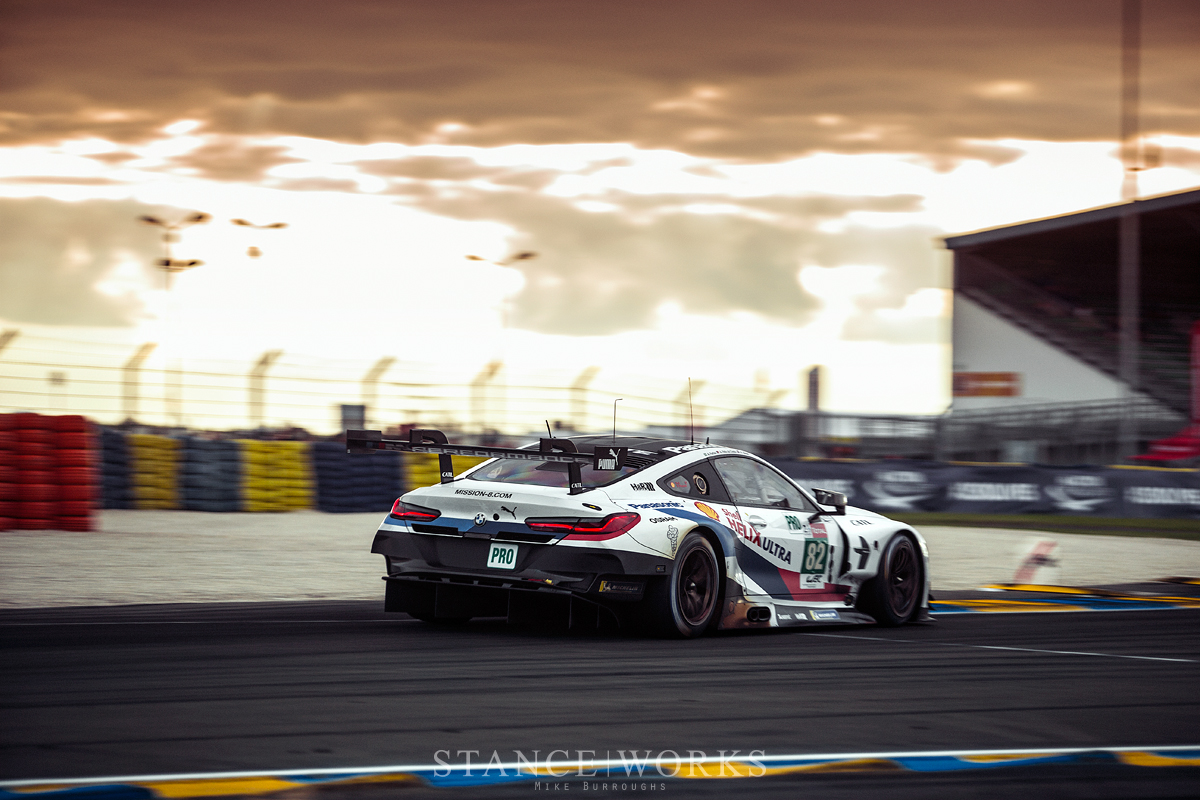
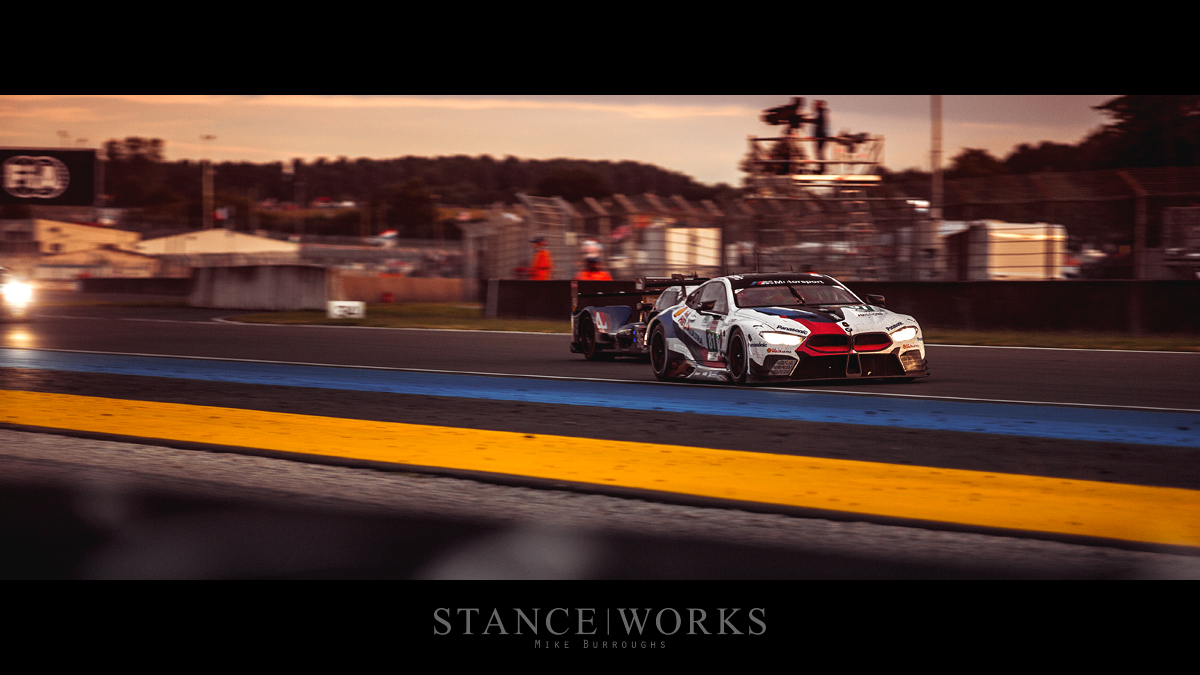
The cars continued their race, and eventually, the sky descended into darkness as cloud coverage engulfed the circuit, killing any hopes for a worthwhile sunset. What added a degree of difficulty to photographing Le Mans was not only the jet lag and fatigue, but the fact that the sky didn't fall dark until nearly 11:00 PM. With the sun rising as early as 5:30 AM or so, it left almost no time no navigate the dark corners of the track for night photography.
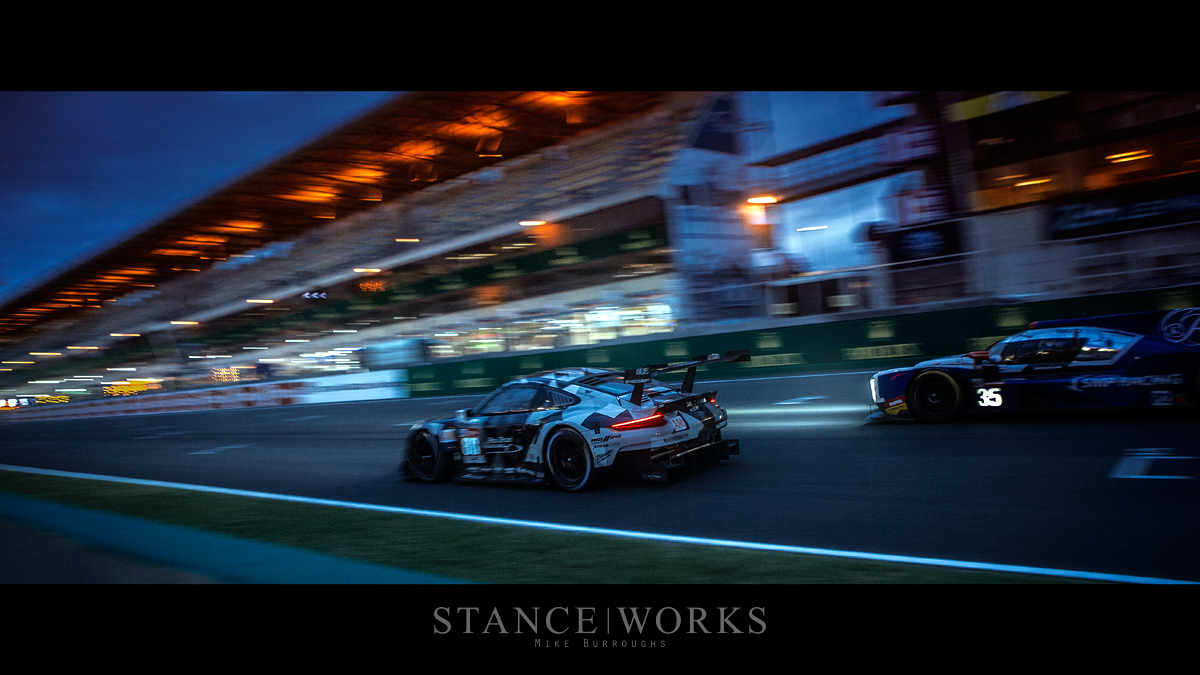
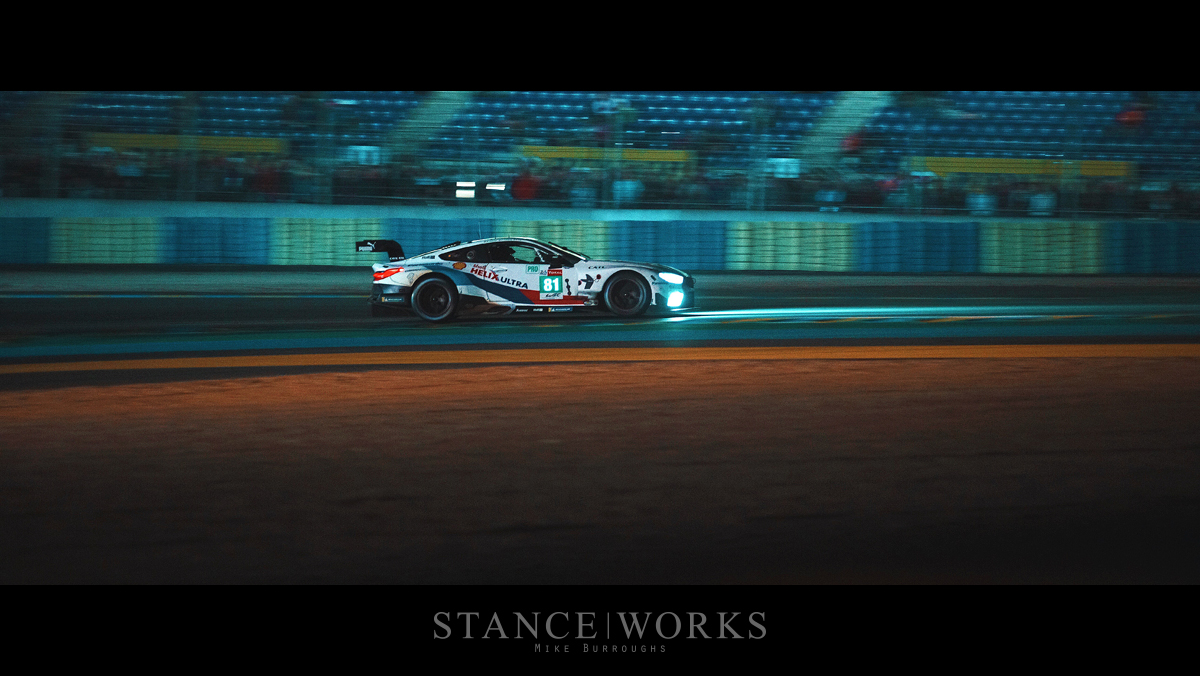
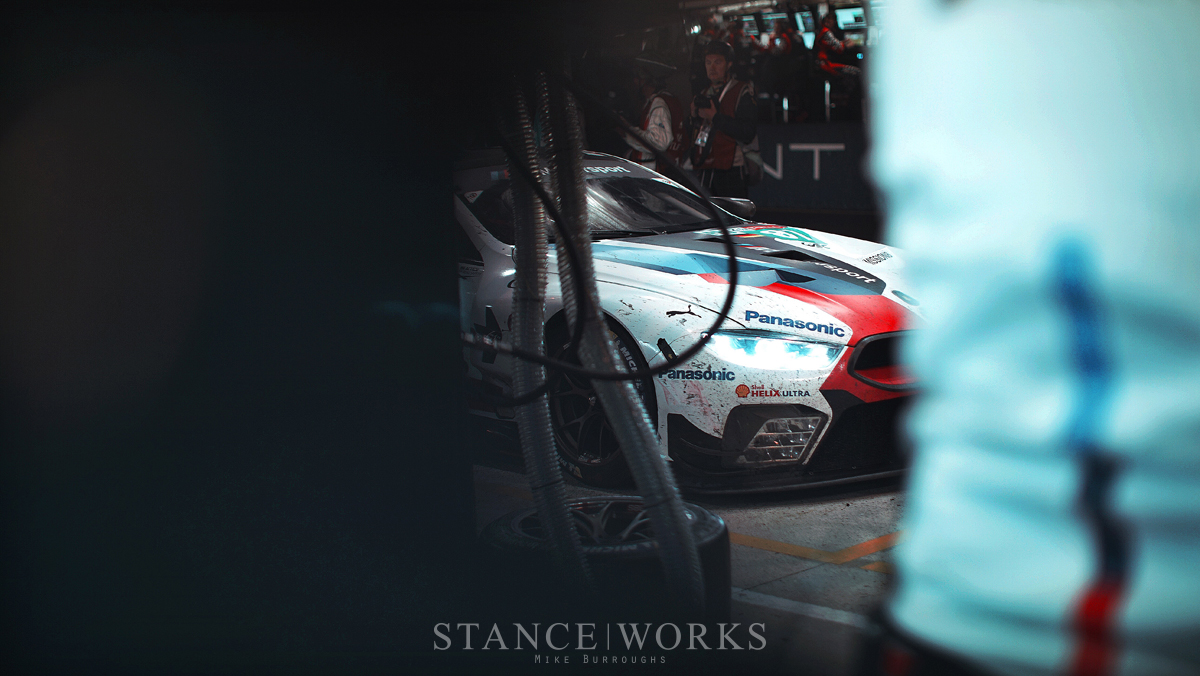
I clung close to the pits and the paddock, hoping for some night-time excitement, and I got what I wanted, for better or worse. Both BMWs required a damper replacement, and I watched as the #81 car was pulled in for light-speed repairs. Although it was the fastest damper replacement I've ever seen, it cost valuable time, pushing the car further back in the LMGTE Pro group. With haste, though, #81 was back on the tarmac, and the tour through the night continued.
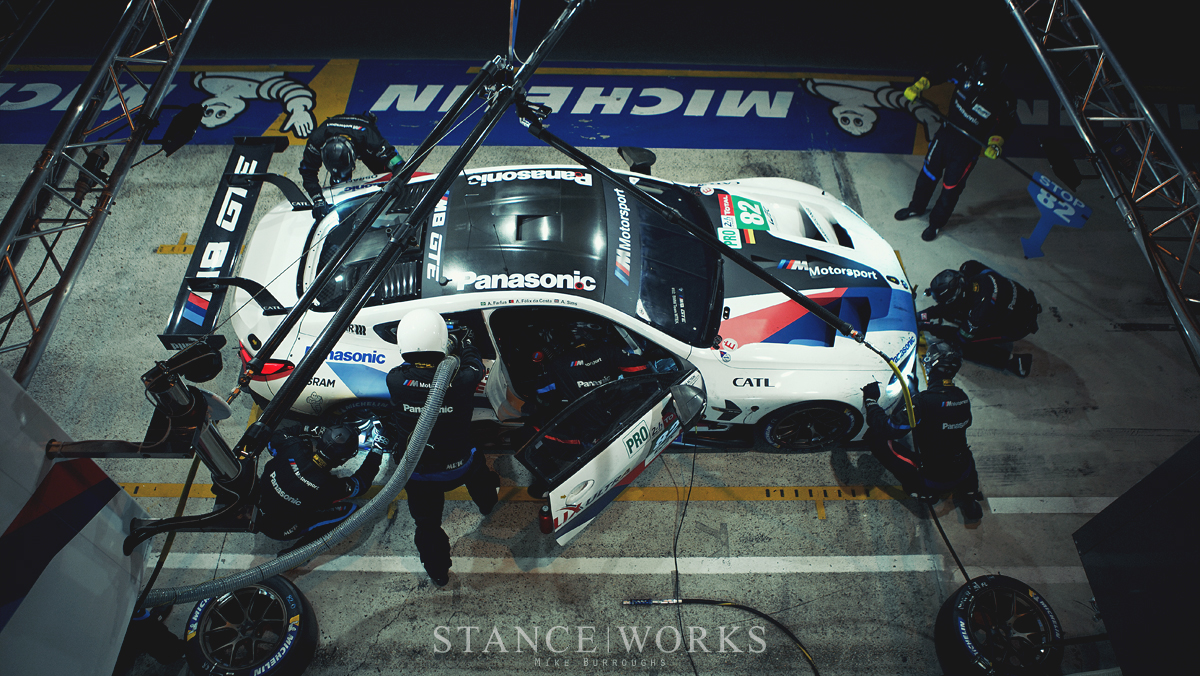
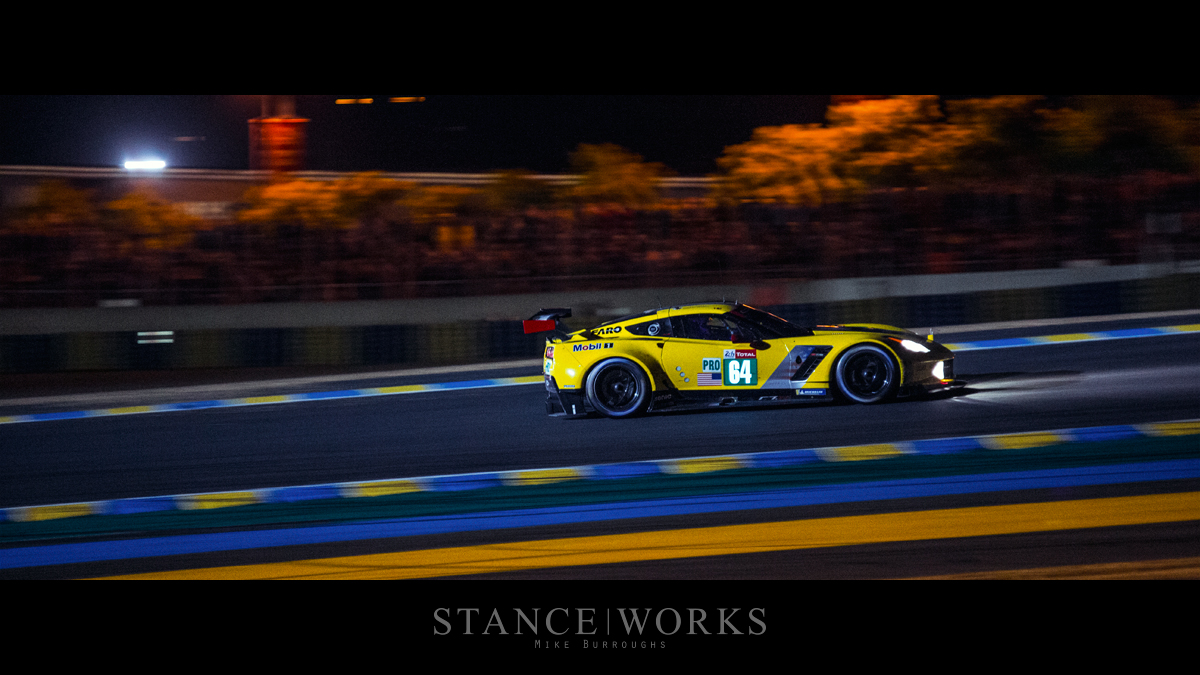
In the dead of night comes the toughest part of the event: exhaustion sets in. I can only imagine the struggle for the drivers. My eyelids grew heavier and heavier as the night went on. I found myself catching a break at BMW's hospitality suite, strung out on Red Bull in hopes of continuing through the night. I wanted to sleep, and even tried, but the fear of missing the action was too great. I gathered my gear and hiked back out to the trackside, waiting for the sun to rise. On my way, I caught glimpses of race crews, and even drivers, catching a bit of shut eye in the paddock and pit's nooks and crannies.
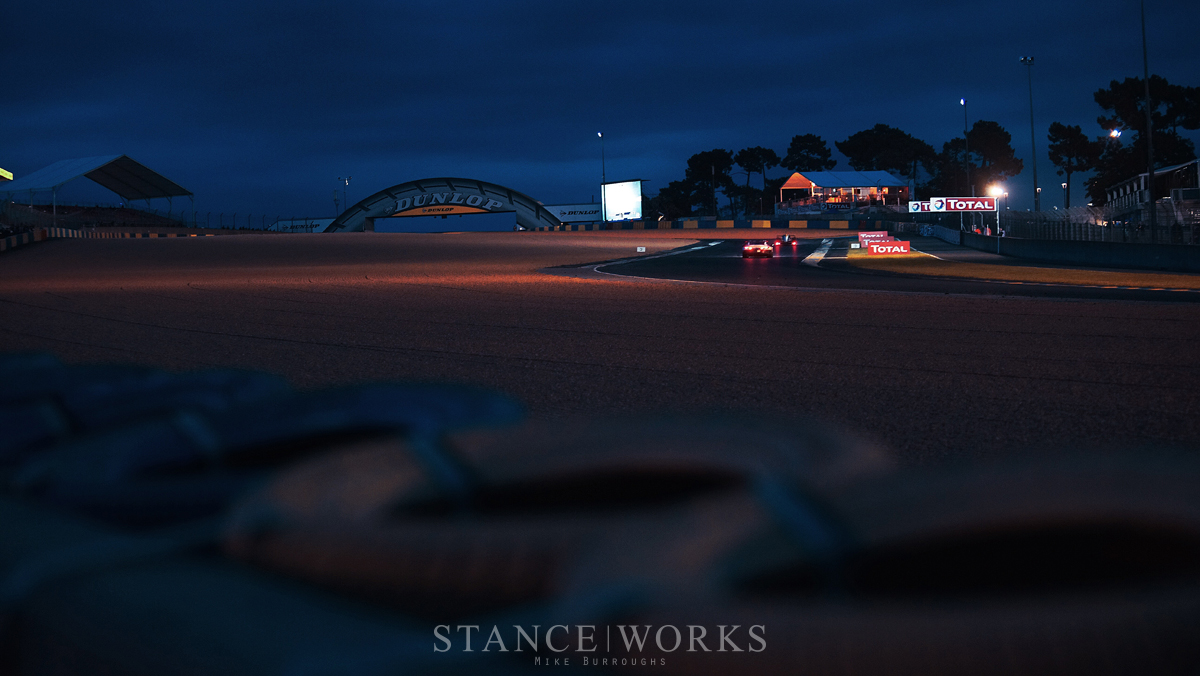

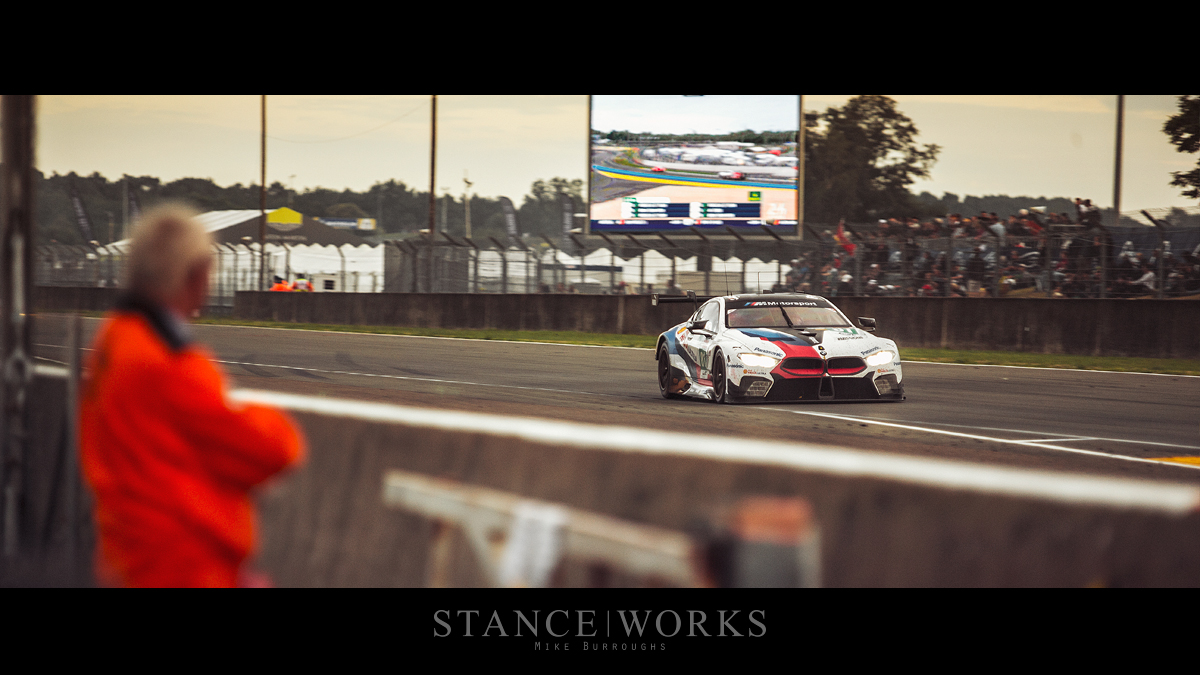
Eventually, the sun pierced the horizon, and with the morning light came a refreshing sense of energy. With the sun up, 9 or so hours of the race remained. The drivers had found a groove throughout the night, and I'm confident the rising sun was warmly welcomed by them as well. The BMWs were still holding their own, with both cars running in the top 3 for extended periods of time, despite the challenges. Unfortunately, disaster struck around 6:30 AM. #82 suffered an accident, ultimately retiring it from the race.
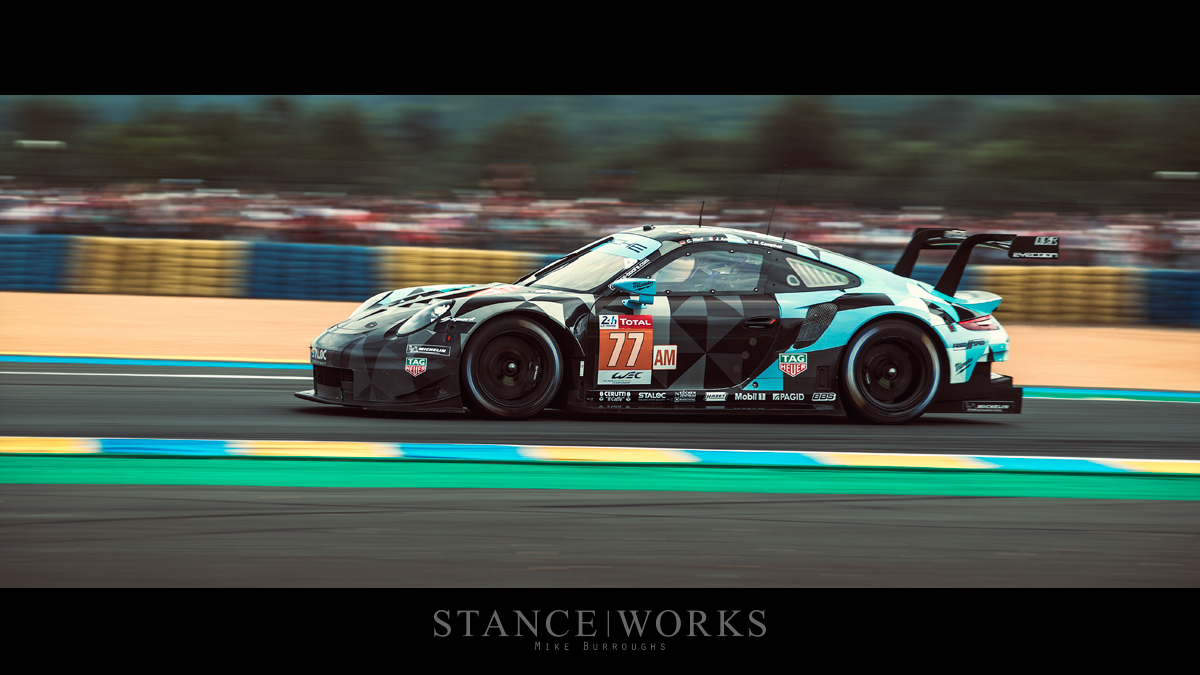
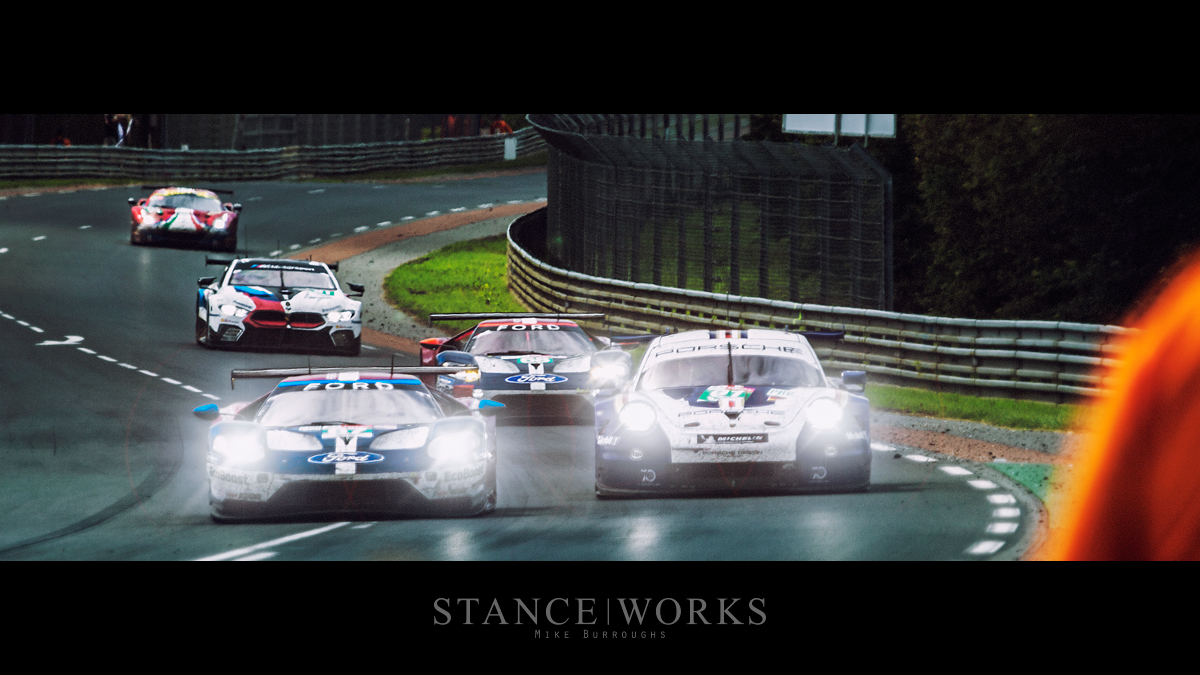
With just one car left in the running, BMW Team MTEK had high hopes, until track debris punctured the radiator of the #81 car. The car, driven by Augusto Farfus, Alexander Sims, and António Félix da Costa, was limped to the pits, where it was hastily repaired and returned to race duty.
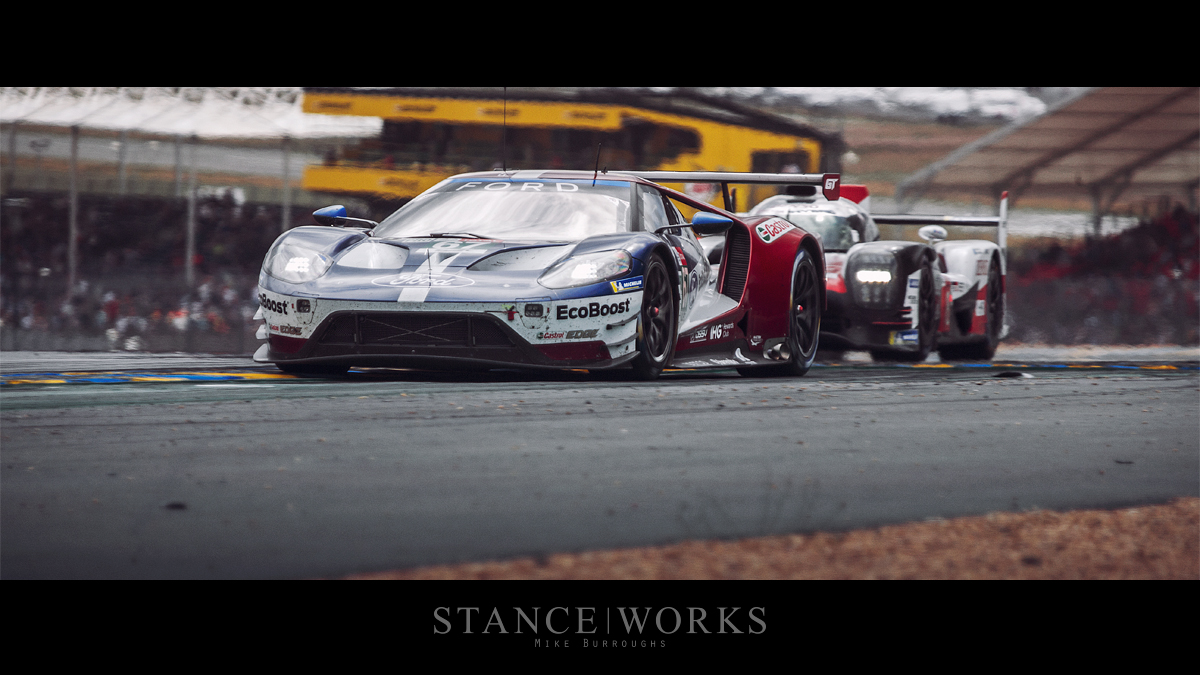
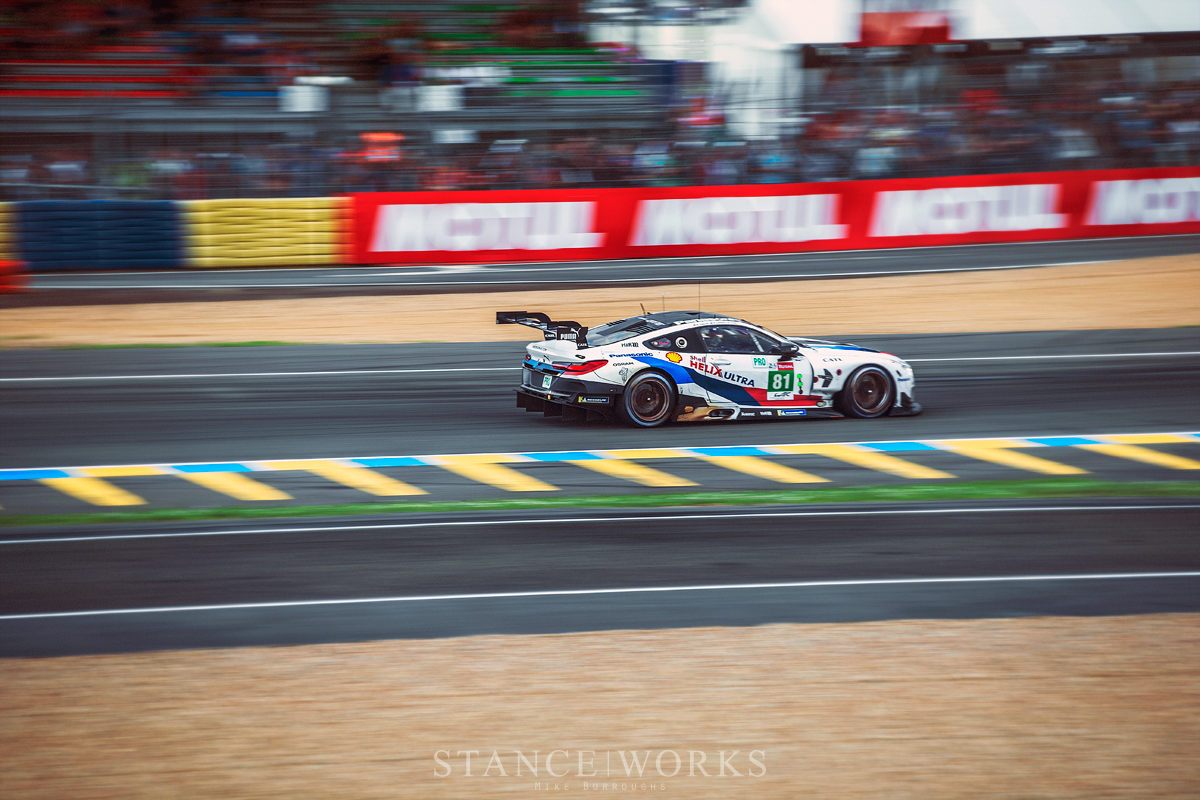
While the #81 M8 GTE was able to finish the race, the repair work simply cost too much time, providing a death blow of sorts to the team's hopes of a podium finish. The LMGTE Pro class's racing was neck-and-neck, even into the final minutes of racing, and with major repairs needed, there was no hanging on.
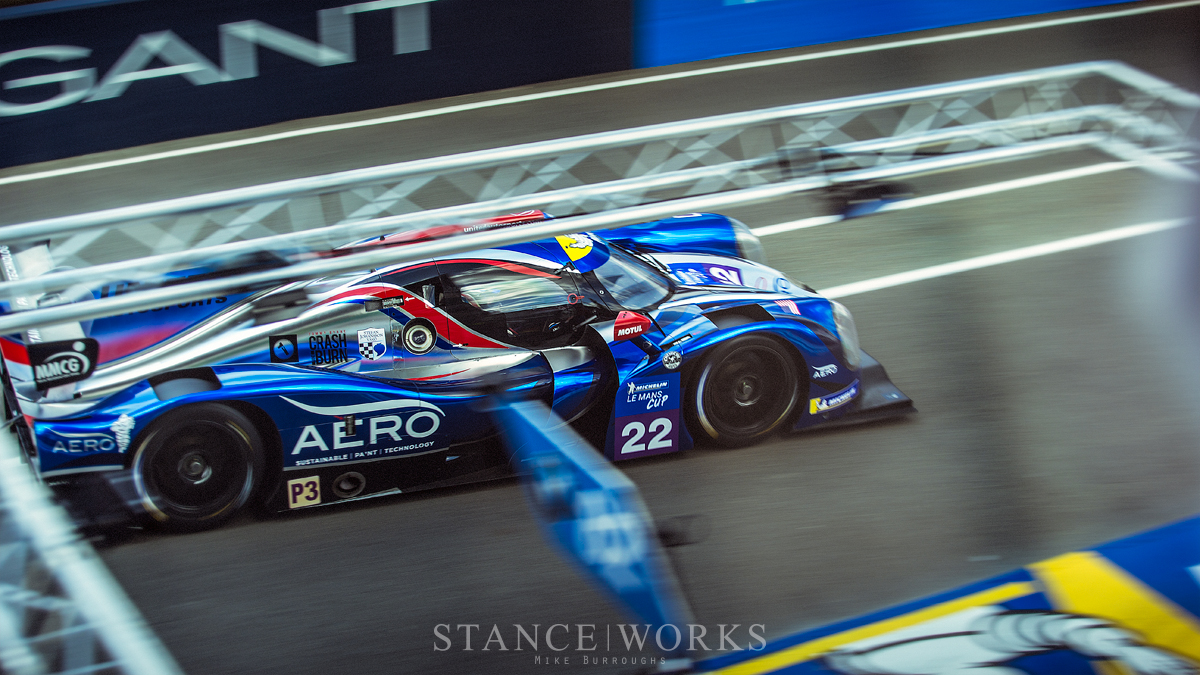
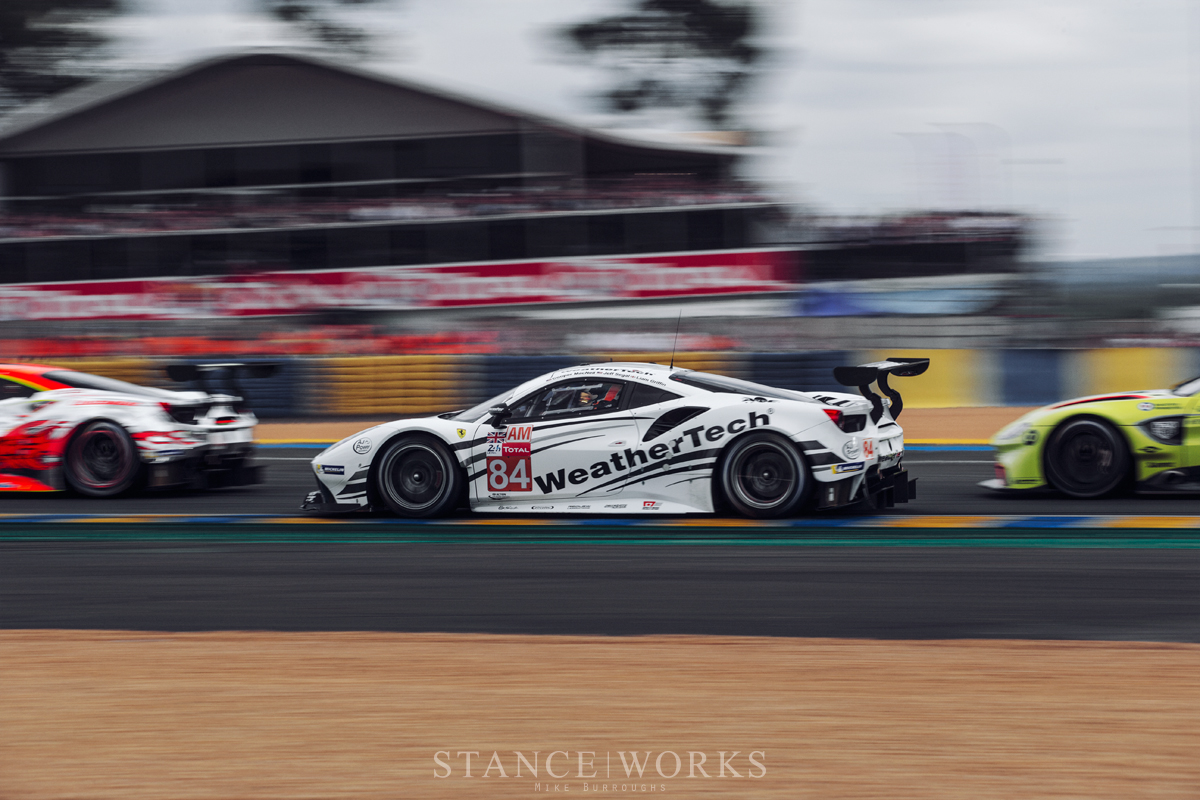
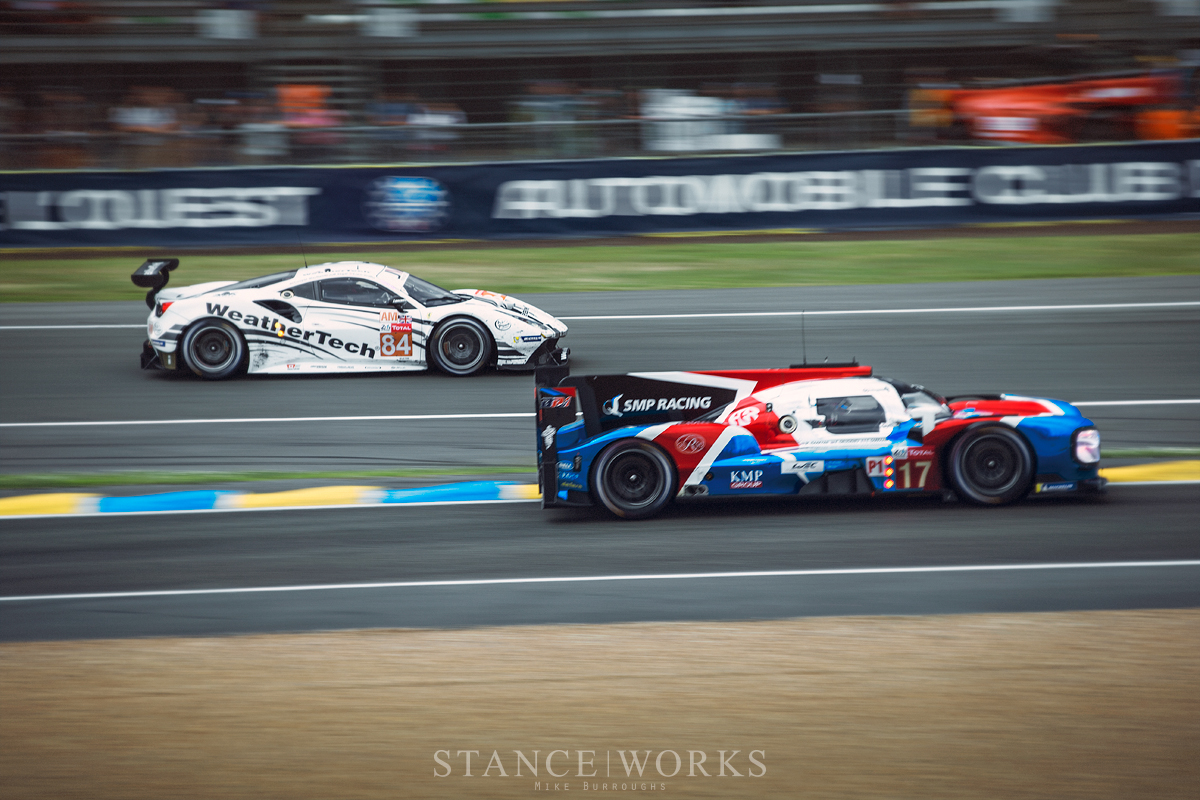
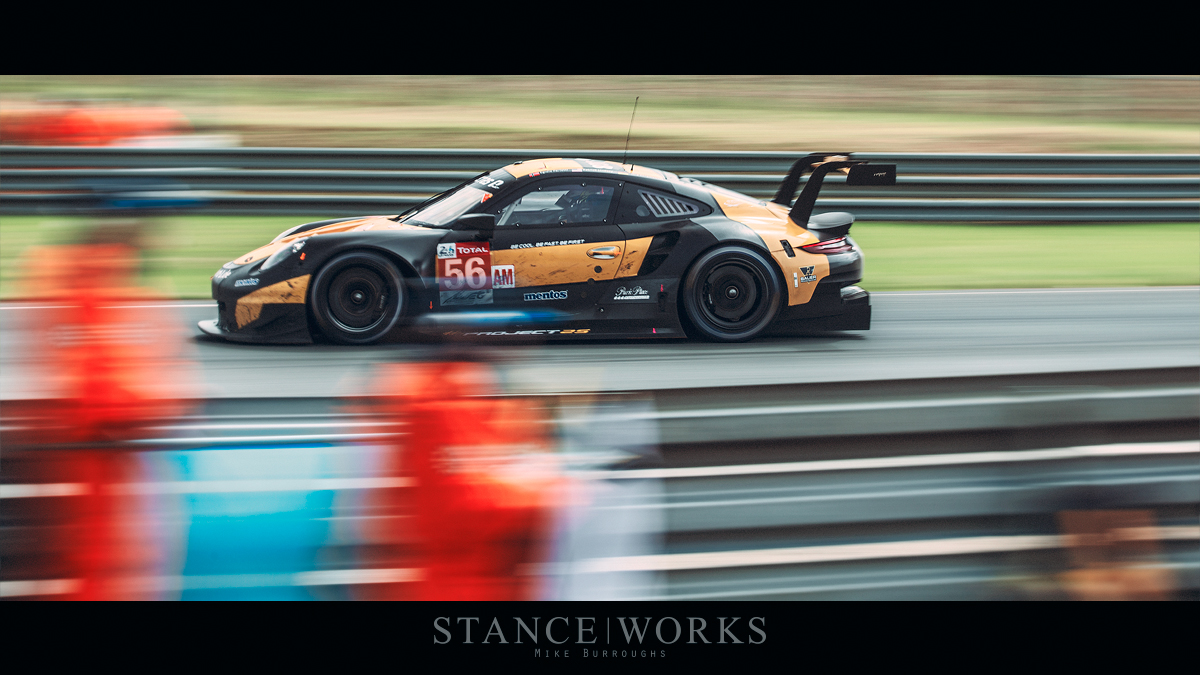
The 86th 24 Hours of Le Mans, instead, turned into a race of stamina and endurance. While the podium wasn't in reach, the end was, and all efforts poured into helping the M8 see a successful finish for its return to the most demanding race in the world. The boys fought on, and fought hard, continuing to fight their way back from the back of the pack. The yowls of the M8 were reassuring with every lap. Taking roughly four minutes to make its way around the circuit, it felt like ages between each time the M8 would pass me by, but each time felt closer and closer to a successful finish.
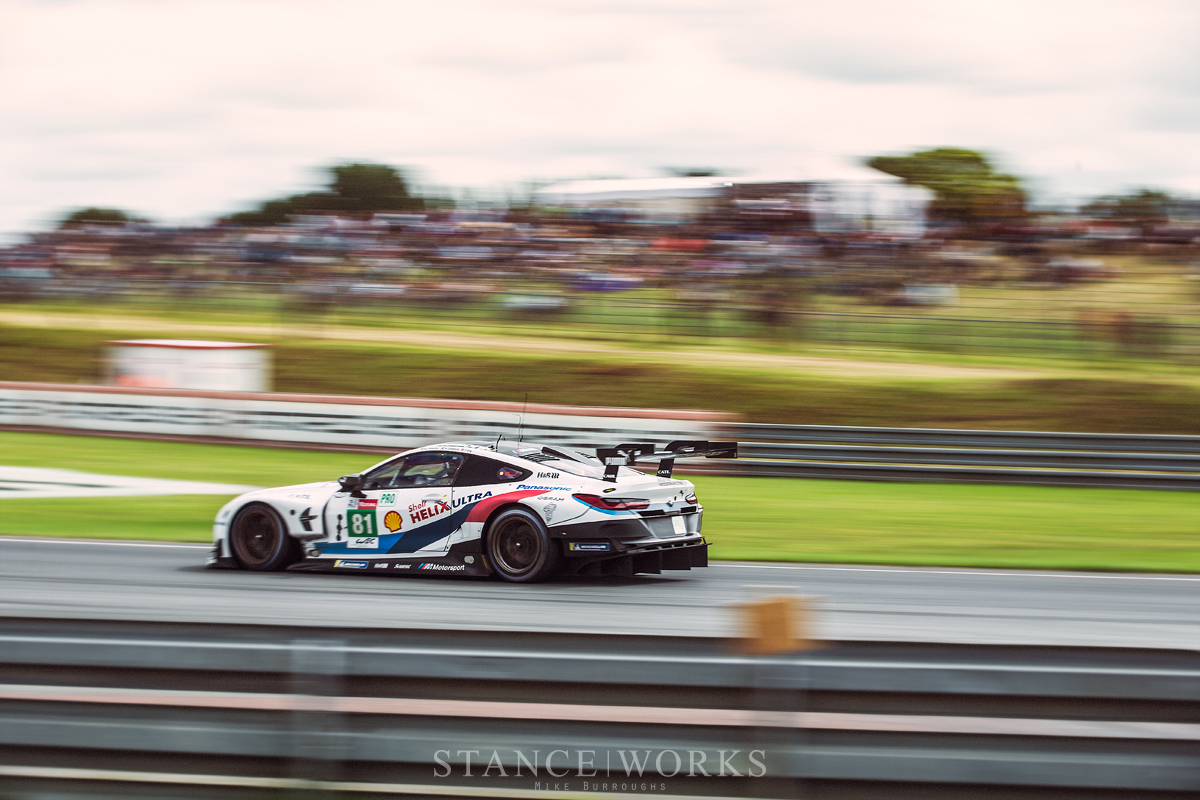
In the end, the #81 M8 finished 12th, with the class lead by the Porsche RSRs. Draped in vintage throwback liveries, the leading pair of Porsches earned their spot atop the podium, and looked great doing it. They provided incredible competition, as they always do, giving the M8s a serious but welcome opponent to race against. Though the M8 missed the podium upon its return, it proved its ability to be a frontrunner, competing with the class's best of the best. 2019 is yet another year, and we'll hope to see BMW return once more, and with a vengeance.
